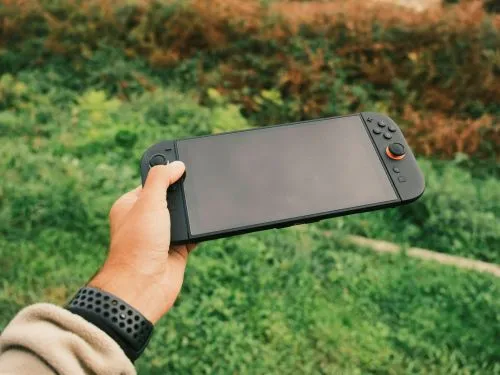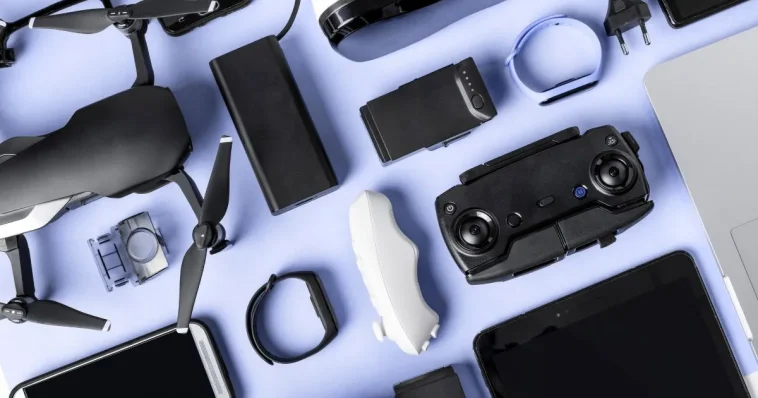The tech world never stands still, and 2026 is shaping up to be a landmark year for consumer electronics. Predictions from tech‑trend analysts and CES 2025 previews all point in the same direction: smarter AI, more flexible displays, advanced health wearables, and seamless integration between the physical and virtual worlds.
This guide highlights 30 of the most exciting innovative gadget categories and devices expected to make waves, drawing on industry research, trade show reveals, and expert projections.
Top 30 Innovative Gadgets to Expect in 2026
1. Foldable and Rollable Smartphones
Reports also suggest that Apple is working on a foldable iPhone, likely to debut in 2026, featuring a seamless touch-sensitive edge design and on-device AI features. These devices could redefine portability by offering large screens when needed without compromising pocket-friendliness.
2. Next‑Generation Flagship Phones (Galaxy S26 Series)
Samsung is expected to launch its Galaxy S26 series in early 2026, including the S26, S26 Ultra, and possibly an “Edge” version. Leaks indicate that the S26 Ultra may feature a 6.9″ AMOLED display, a Snapdragon 8 Elite 2 chip, and a larger battery (around 5,000 mAh). Combined with enhanced AI and imaging capabilities, these flagships could push the boundaries of mobile performance.
3. Quantum‑Powered Personal Computers
Quantum computing is edging closer to practical use. Emerging reports suggest that by 2026, consumer-accessible quantum‑powered devices may begin to emerge, offering ultra-fast data processing and novel AI use cases. These machines could be game changers for creators, researchers, and power users who need extraordinary compute capabilities.
4. AI‑Integrated Health Wearables
5. Smart Rings and Earables
6. AR Glasses With Real‑World Utility
Augmented Reality (AR) glasses are predicted to make a strong jump in 2026. Big companies like Meta, Apple, and Sony are developing lightweight, AI-powered smart glasses offering live navigation, translation, and floating notifications. Meta is reportedly working on dual‑display smart glasses that allow users to multitask across two lenses. These glasses could finally deliver the sci-fi vision of digital overlays in everyday life.
7. Full‑Body Haptic Suits for Immersive VR
Virtual Reality (VR) is evolving beyond visuals. According to speculative design reports, companies like Meta may introduce full-body haptic suits in 2026, which simulate touch, pressure, and temperature. These suits could transform gaming, training, remote collaboration, and social VR experiences by making virtual interactions physically felt.
8. Personal AI Robot Assistants
Robotics is becoming more personal. Tesla’s Optimus Gen 2, a humanoid AI robot assistant, is expected to enter markets around 2026. The robot would learn users’ habits, help with daily chores, and integrate with smart home systems. This could be a breakthrough in home automation, offering an always‑present helper with motor ability.
9. Foldable or Touch‑OLED Laptops
Apple is reportedly planning a MacBook Pro with an OLED display and touch capability in 2026. This design would merge power with flexibility, creating a laptop that is more immersive and responsive than previous models. Such laptops could appeal to creatives, students, and professionals who want a highly capable device with a modern interface.
10. Micro‑LED and Mega‑Size TVs
Television tech is heading into a bright new era. Micro‑LED panels are expected to drop in price, enabling ultra-large, high-brightness TVs. Simultaneously, Dolby Vision 2 is expected to deliver even more vivid HDR on consumer sets. These TVs could become the centerpiece of home theaters and immersive gaming setups.

11. AI‑First Operating Systems
Instead of just devices running AI apps, 2026 may bring AI-native operating systems that are deeply integrated into all functions. These systems may adapt to user behavior, predict needs, and proactively assist rather than just react. Devices powered by these OSes could feel more like companions than tools.
12. Edge AI Chips
Edge computing is a big trend, and 2026 will likely accelerate it. Chips designed for local AI processing (on-device rather than cloud) are expected to power real-time experiences. These will allow faster image processing, live translation, and context-aware assistance with lower latency. The result: smarter devices that do not rely on constant internet connectivity.
13. Ambient Intelligence Home Systems
Smart homes will get truly intelligent. The “ambient intelligence” ecosystem is projected to expand in 2026, blending AI, voice control, and automation to create environments that react to presence, temperature, and daily habits. They could anticipate your needs, turning lights on, adjusting settings, or playing music without manual input.
14. Next‑Gen Smart Cars
Vehicles in 2026 are expected to feature more advanced semi-autonomous systems, hands-free driving assist, and in‑car AI assistants. Smart cars may integrate with home tech, offering seamless handoffs between mobility and living spaces. These developments drive a future in which transport is deeply connected and adaptive.
15. Wi‑Fi 7 Routers and Devices
Networking is also evolving. Wi‑Fi 7 is expected to roll out in 2026, delivering multi-gigabit speeds, lower latency, and better support for many connected devices. That means smoother video calls, more reliable gaming, and stronger bandwidth for smart homes. Upgrading to Wi‑Fi 7 could be a major leap for anyone relying on a robust and fast home network.
16. Quantum‑Safe Security Gadgets
As quantum computing advances, so does the need for stronger security. Future IoT devices may include quantum-safe encryption to protect data against next-generation decryption techniques. These gadgets could become standard in smart homes and connected devices, enhancing consumer privacy at a fundamental level.
17. Advanced Smartwatches With Emotional AI
Smartwatches are set to become even smarter in 2026. With emotional AI, these wearables may detect stress, mood changes, and mental fatigue in real time. They could then offer calming interventions, such as guided breathing or tailored notifications, making the watch a partner for well‑being.
18. Portable Quantum Sensors
While still early, reports suggest consumer-aimed quantum sensors may emerge by 2026. These devices could bring highly sensitive measurements, for magnetic fields, gravity, or motion, into everyday use. Applications include scientific research, industrial diagnostics, and advanced navigation.
19. Next‑Gen Projectors and Hybrid Devices
Innovations in projector technology are underway. At IFA Berlin 2025, Anker showcased a projector‑speaker hybrid slated for 2026. This portable device can function as a projector, music system, and party speaker, a modular entertainment hub. Expect more lightweight, high-lumen, and smart projectors in the coming year.
20. Personal Health Robots
Beyond humanoid assistants, smaller personal health robots are gaining attention. These robots may provide wellness checks, monitor home safety, dispense reminders, and integrate with health wearables. Trends suggest they will become more affordable and capable by 2026. They could transform how daily health management is handled in the home.

21. Smart Energy Management Devices
Wireless smart home energy managers are expected to become more common by 2026. These gadgets can optimize power use, shift energy loads, and integrate with renewable energy sources, helping households reduce bills and carbon footprints.
22. Biometric Payment Rings
Wearables will continue to redefine payments. Biometric payment rings, which authenticate using a finger’s biometric data, are expected to evolve into more secure, convenient transaction devices by 2026. These rings could replace cards or phones for daily payments.
23. Advanced Drone Companions
Consumer drones are going mainstream. In 2026, drones may be more autonomous, equipped with AI for obstacle avoidance, dynamic follow modes, and smart photography. They may also integrate with VR, allowing users to pilot in first‑person view.
24. AI‑Powered Smart Glasses for Learning
Beyond AR navigation, smart glasses in 2026 could support real-time translation, language learning, and educational overlays. These could be especially transformative for students, travelers, and professionals who learn on the go.
25. Intelligent Sound Systems
Home audio systems are expected to benefit from AI and connected tech. Future speakers may use adaptive sound profiles that sync with room conditions and personal listening habits. Dolby Vision‑style innovation could even extend to spatial audio and smart surround sound.
26. Smart Fitness and Recovery Devices
AI-enabled fitness gadgets will go beyond trackers in 2026. Expect smart recovery tools, like AI-guided massage devices, neuromuscular stimulators, and sleep-optimization wearables, that adapt to user physiology and training loads.
27. Next‑Level VR Controllers
Virtual reality accessories are improving fast. Next-gen VR controllers may track finger-level movement, provide haptic feedback, and even simulate weight or resistance. Users will feel more immersed when interacting with virtual objects.
28. Biodegradable Tech Accessories
Sustainability is a growing priority. In 2026, eco-friendly gadget accessories are expected to become more common: biodegradable phone cases, recycled-material earbuds, and compostable packaging all aim to reduce tech waste.
29. AI‑Enabled Security Cameras And Home Monitors
Smart security gear is evolving. Cameras, sensors, and monitors in 2026 may incorporate edge AI to identify people, detect anomalies, and alert you in real time, without relying entirely on cloud processing. These devices could bring both privacy and performance improvements.
30. Novel Gaming Consoles and Handhelds
Finally, the gaming world is likely to introduce new form factors. Innovative handheld devices and micro‑consoles may pack powerful GPUs, AI-enhanced graphics, and modular accessories. Coupled with cloud gaming, these consoles could offer high-end performance in ultra-portable form.

Spotlight on Real Products Worth Watching
While many of these are predictions or prototypes, a few real, purchasable devices already align with 2026’s trends:
- Steam Deck OLED – A powerful handheld gaming machine, ideal for portable high-performance play.
- HOCO E96A Locator – A small smart tracking device for finding keys, bags, or other essentials using network-based positioning.
- Portable Waterproof Mini GPS Tracker – Durable, real-time tracker that could inspire future AI-powered location gadgets.
What’s Driving These Trends
Several major shifts are fueling this wave of gadget innovation for 2026:
- AI Everywhere: More devices will run AI locally (edge AI), reducing dependence on cloud computing and enabling real-time intelligence.
- Flexible Displays: Foldable and rollable screens are maturing, enabling new form factors in phones and laptops.
- Health as Priority: Wearables are shifting from tracking to predicting health and from personal wellness companions to personal wellness guides.
- Integrated Smart Homes: Ambient intelligence will connect homes in more intuitive ways, learning from habits and anticipating needs.
- Quantum and Edge Security: As quantum computing becomes more relevant, so does the need for quantum-safe encryption and smarter devices.
How to Prepare for These Gadgets
- Stay Informed: Follow trusted sources like CES coverage, industry‑insight platforms, and tech trend blogs.
- Plan Your Upgrades: If considering a major purchase, think about waiting, as some 2026 devices may offer breakthrough features.
- Future‑Proof Your Home: When buying smart home gear today, choose devices that support firmware updates and energy-efficient standards.
- Back Up Data Regularly: With more intelligent devices collecting personal data, secure backups and privacy settings are more important than ever.
Transforming Life With Smarter, Predictive Tech
2026 promises to be a landmark year for consumer technology. From rollable phones to emotionally intelligent wearables, the next generation of gadgets is poised to blend AI, design, and utility like never before.
These 30 devices and categories highlight where innovation is going. Whether in health, entertainment, home automation, or mobility, the gadgets of tomorrow will not just be smarter, they will be more personal, predictive, and profound.
As these technologies roll out, users should watch carefully and be ready for a transformative leap in how everyday life feels, functions, and connects.



